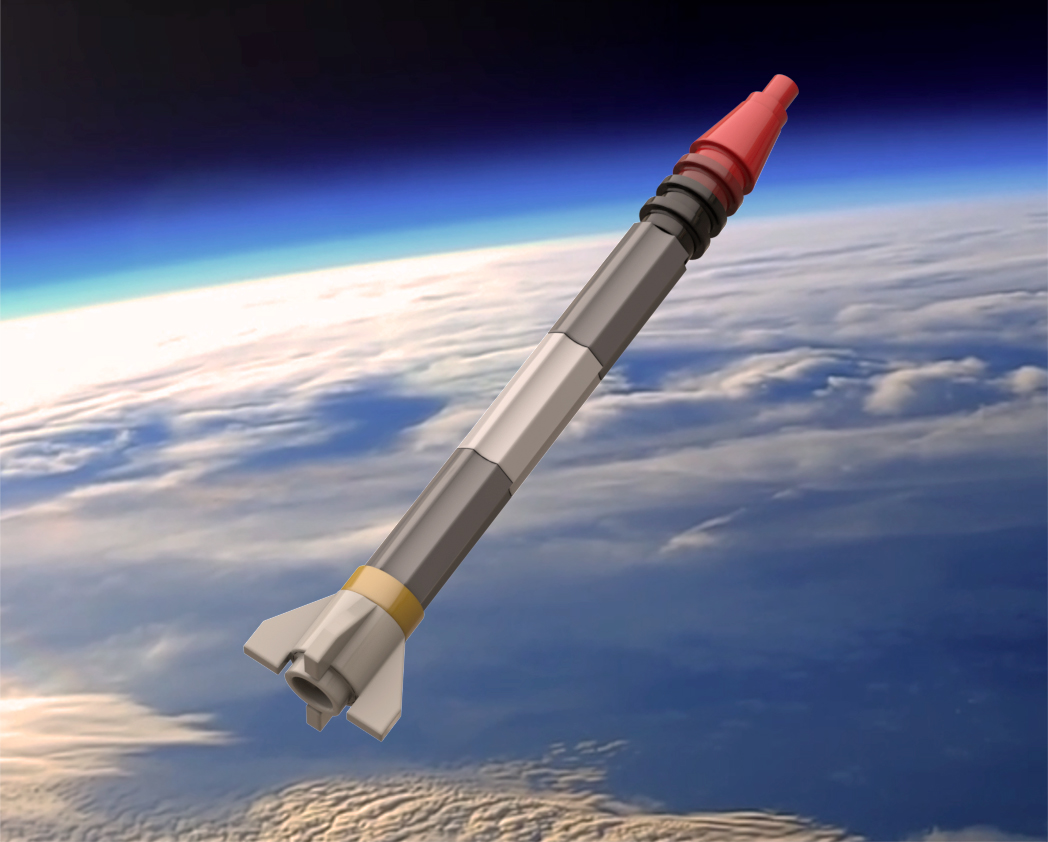
LEGO Designer:
Dan Fallon (phreaddee)
Designed: March 2023
Categories:
All,
Suborbital and Sounding Rockets
Véronique (N, AGI, 61 & 61M)
Véronique was a French liquid-fuelled sounding rocket of the 1950s. It was the first liquid-fuel research rocket in Western Europe.
Véronique was a French-led project that had its roots in the German V-2 rocket, and was partially developed by German scientists who had worked in Peenemünde. It was a successor to the cancelled Super V-2, the Véronique was built between 1950 and 1969 in several versions, of which the versions P2, P6 and R were only experimental models. They were made in Vernon, Eure. The name Veronique is a portmanteau of Vernon-électronique, and is also a common French first name.
Partial system tests were conducted as early as 1951. However, it was not until May 1952 that the first full-scale Véronique-N (Véronique Normal) was launched. It was powered by a single liquid-fuelled rocket motor that weighed four tonnes; its fuel was a combination of kerosene and nitric acid. Véronique employed a unique wire-guidance system that used four 55 m cables attached to its fins immediately upon launch. Initially, the rocket motor suffered from combustion instability, which became a leading cause of early launch failures; furthermore, the maximum altitude of 65 km was found to be insufficient for many scientific purposes.
Accordingly, it was decided to undertake a lengthy development programme throughout the 1950s which produced numerous other models were produced for specific purposes. The Véronique AGI was developed as a sounding rocket, a total of 15 such rockets were constructed using subsidies provided by the French National Defense Scientific Action Committee. This model was largely similar to the Véronique-N, had had a reduced empty weight, and a simplified engine that used turpentine fuel in place of kerosene. A lengthened model, the Véronique NA, enabled an altitude of 135 km to be reached; it also features a modified engine injector that had greater stability.
The definitive version was the Véronique-61, which featured substantial improvements such as a 50% increase in thrust. It was a far larger rocket, capable of carrying a 60 kg payload to an altitude of 315 km. A lengthened version, the Véronique-61M, was also produced, suitable for carrying payloads of up to 100 kg. On 8 June 1964, the first was launched; the last Véronique-61 was launched on 31 May 1974. Of the 21 launches performed, 20 were considered to be failures to varying degrees.
Amongst the tests in aid of scientific research that were conducted using the rocket were a series of biological experiments involving live animals. On account of the available payload capacity and thrust output available via Véronique, the use of larger animals was not possible, thus rats and cats were used; these were carried within a sealed container within the rocket’s nose cone which was designed to be retrievable and for the return of its occupant alive. One consequence of these flights was the only recorded launch of a cat into space.
By 1965, the Véronique had begun to be eclipsed by a newer rocket, which was also entirely indigenously designed, the Diamant expendable launch system
Designer Notes
Part count: bricks, lots.
| Unit | width | length | height |
|---|---|---|---|
| Studs | |||
| Inches | |||
| Centimetres |